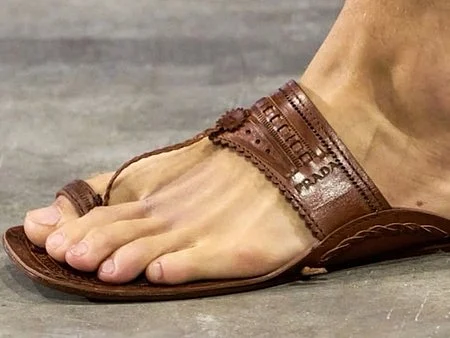From Prada Kolhapuris to Bulgari's gems from Jaipur: Why India is suddenly the world’s fashion muse
India is on every global luxury brand's radar. The question is: what changed?

Dubai: For the longest time, global luxury treated India like its favourite Pinterest board – a place to borrow patterns from, a dash of colour, maybe a motif or two. No credit required. And yet here we are in 2025, and suddenly Prada is selling kolhapuris, Louis Vuitton has doodled on our humble auto-rickshaw, and even the once-dismissed mojari has found itself in a glossy campaign.
India is on everyone’s radar. The question is: what changed?
Part of the answer lies in what just played out in Jaipur yesterday.
Priyanka Chopra, Bulgari’s Global Brand Ambassador, recently walked the streets of the Pink City alongside Lucia Silvestri, the Italian house’s Jewellery Creative and Gems Buying Director.
And instead of hiding behind “inspired by the East” mood boards, Bulgari put the location front and centre: Johari Bazaar, one of the world’s most famous jewellery markets, where Silvestri personally handpicks the vibrant stones that end up in their collections.
The visual is striking. Rows of Bandhani dupattas. Mojaris hanging from wooden stalls. The heady scent of mogra flowers. Stacks of kundan necklaces. Priyanka weaving through it all, not as a tourist but as a co-narrator of India’s influence on luxury.
And that’s precisely the point. Jaipur has always been one of the world’s gemstone capitals – a fact locals have known for centuries – but luxury brands are only now saying it out loud.
The tour didn’t stop there. Priyanka also stepped into the Diwan-e-Khas at City Palace, a hall built for private royal audiences, its terracotta pink walls covered in intricate floral patterns. A reminder that long before Milan and Paris, Jaipur knew a thing or two about design. This isn’t “exotic inspiration.” This is original artistry that’s been alive and evolving for centuries.
Here’s the irony. For decades, international houses dipped into Indian culture when it suited them. A print here, a paisley there. The rest of the time, they labelled the same craft as “ethnic,” “local,” “folk” – anything but couture. When Prada’s nod to the kolhapuri finally came, it was more damage control than discovery.
But there’s a shift now, and it has everything to do with who is telling the story. With Indian women like Priyanka Chopra leading global campaigns and not just appearing as the muse, the balance is shifting. When she stands next to a creative director explaining why those gems matter, she isn’t a background image; she’s the voiceover.
So, is this cultural appreciation or just a glossier form of appropriation? That’s a debate luxury will have to answer for itself. But there’s no denying that India isn’t just a reference anymore. It’s the stage.
This moment is about more than just a pair of kolhapuris with a four-figure price tag. It’s about a country that was once treated as a design resource now being acknowledged as a creative powerhouse. Jaipur’s bazaars, its pink facades, its gemstones – they are no longer a mood board. They are the main event.
And maybe that’s the real story here. For the first time, global luxury isn’t just borrowing. It’s looking, listening, and sometimes even giving credit. About time.
Network Links
GN StoreDownload our app
© Al Nisr Publishing LLC 2025. All rights reserved.